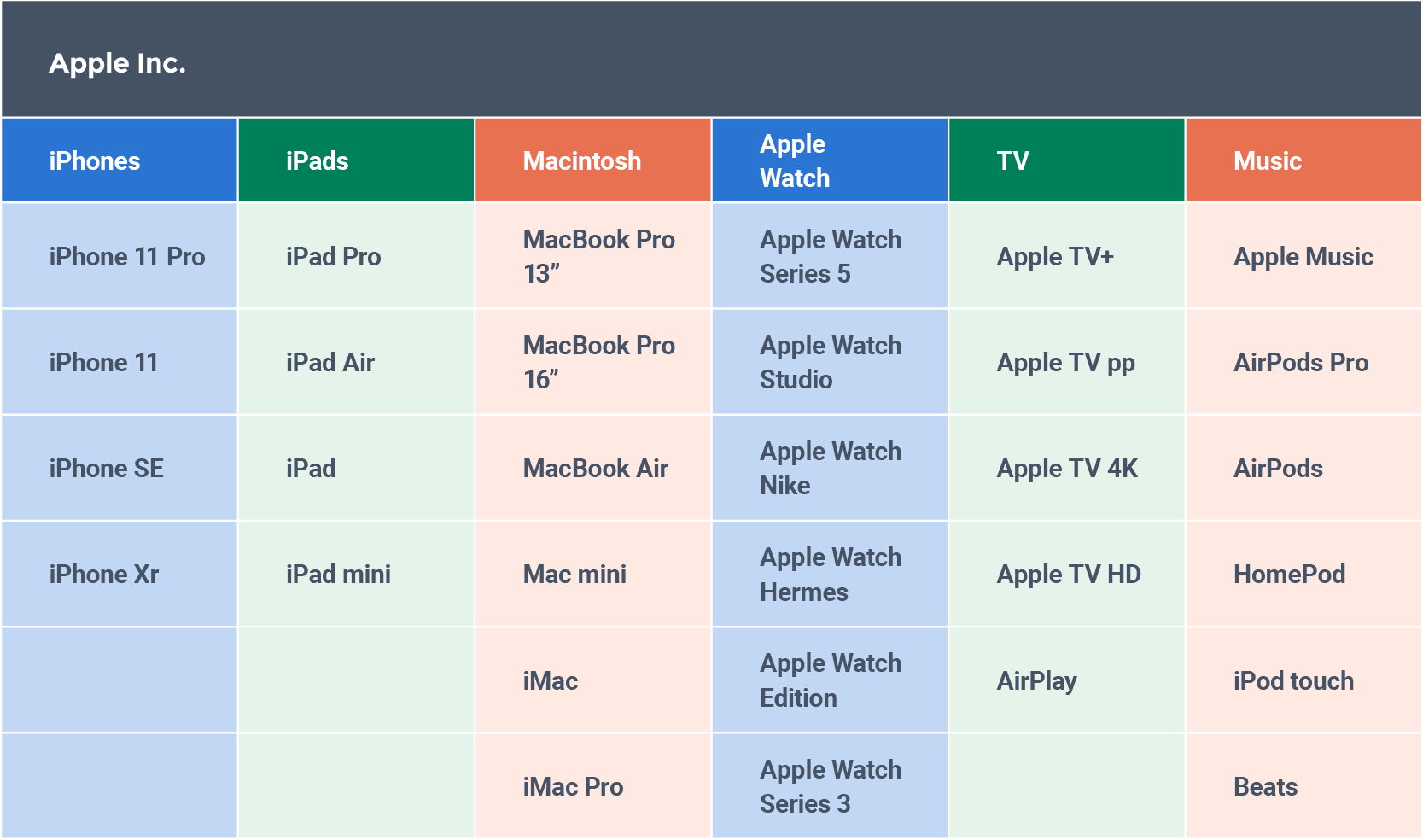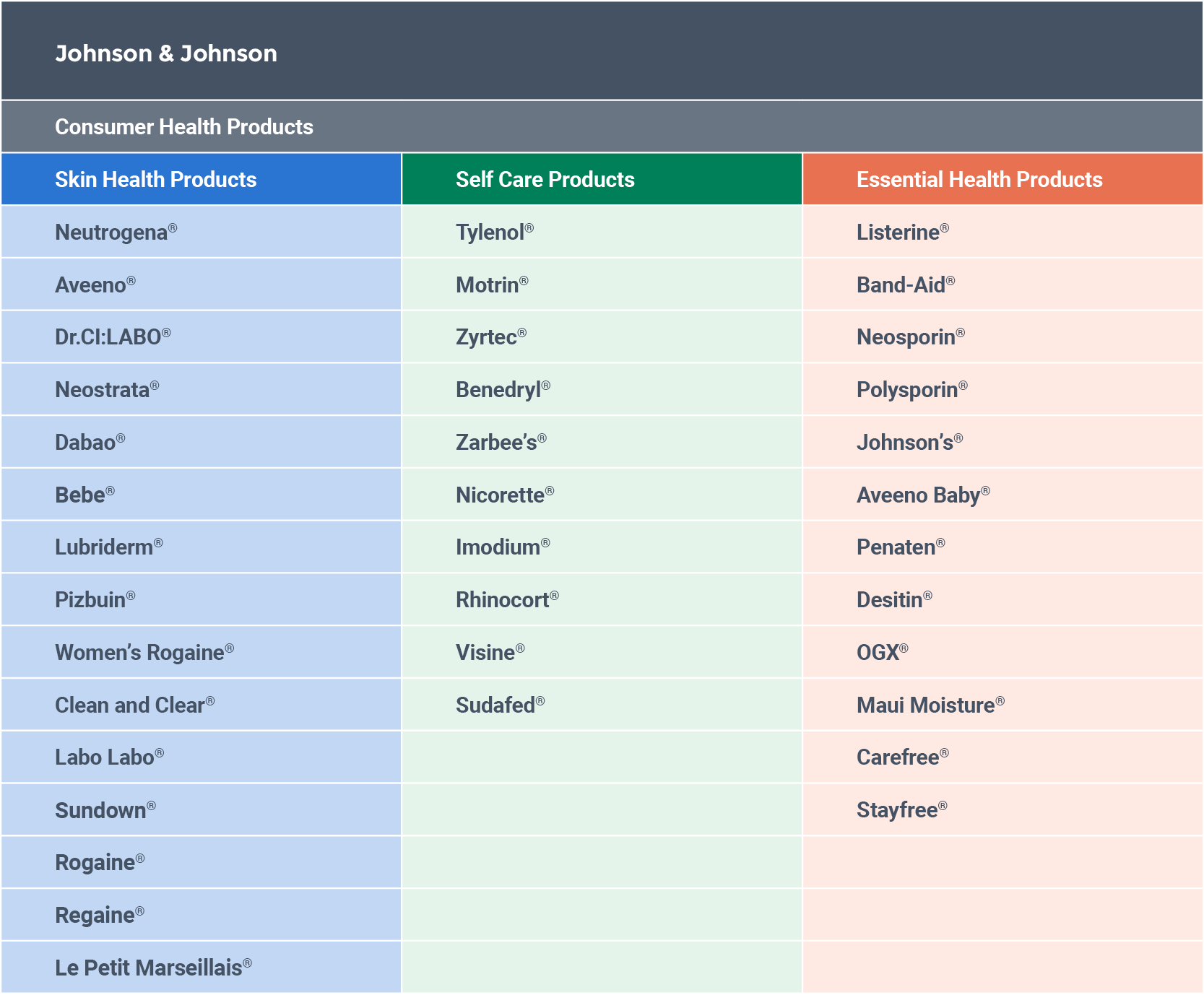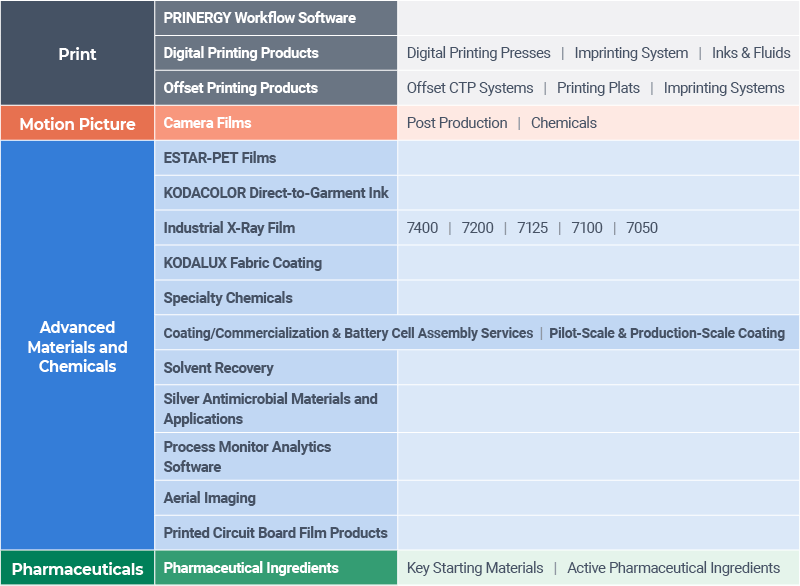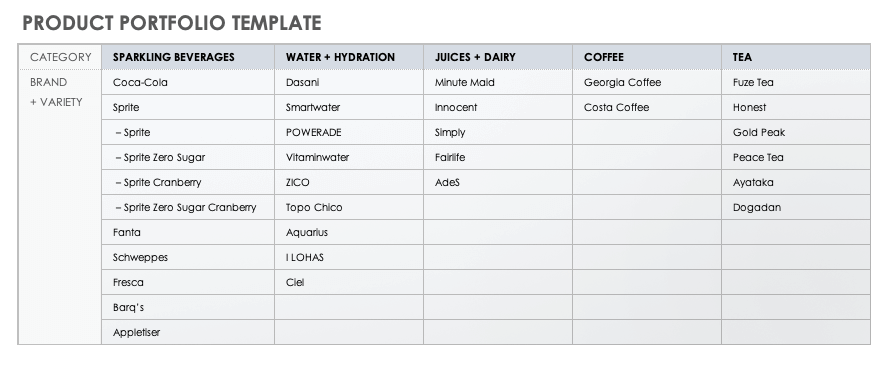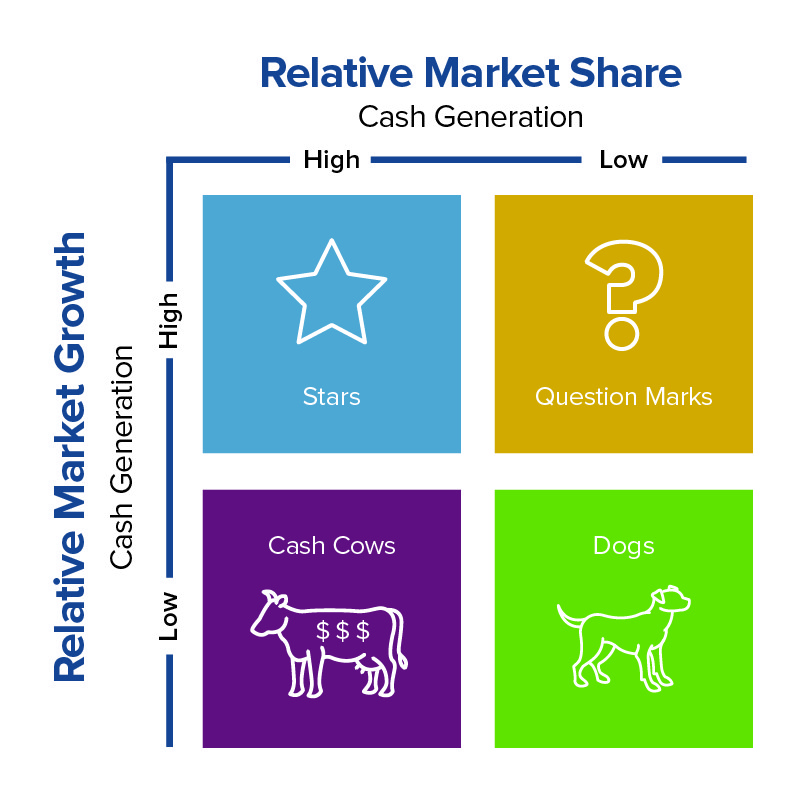Company Product Portfolio Examples
A product portfolio is the complete collection of products or services that a business sells. The portfolio may be straightforward and consist of a single product, or it may consist of multiple, diversified product lines.
Larger organizations, such as Apple Inc., organize similar products into product lines or product families. The Macintosh product line includes the MacBook, MacBook Pro, MacBook Air, Mac Mini, iMac, and Mac Pro. However, the entire Apple product portfolio is much more complicated, comprising six product lines and numerous products within each line. The chart below shows the entire Apple product portfolio, arranged by product line.
Johnson & Johnson is another multifaceted organization, with a product portfolio that spans consumer health products, medical devices, and pharmaceuticals. Each of those categories breaks down further into household name brands. Johnson & Johnson’s consumer health product line alone consists of over 35 individual product brands.
Another well-known brand, Eastman Kodak, founded in 1888 by George Eastman and Henry A. Strong, held the dominant position in the film photography market for most of the twentieth century. The advent of digital photography left behind Kodak’s primary business, analog photography. However, the company continues to thrive today, with a focus on printing products. Recently, Kodak began conducting an internal review in connection with the potential diversification into pharmaceuticals.
Theoretically, what might the Kodak product portfolio look like when the company launches the Kodak pharmaceutical branch? The Kodak team will likely make product portfolio analysis part of its internal review, so it can determine how pharmaceuticals fit into the company’s portfolio. That product portfolio analysis will also ascertain whether or not it is profitable to maintain all product lines and products.
What Is Product Portfolio Management and Analysis?
Product portfolio management provides visibility into a company’s entire product portfolio, so you can understand and manage the relationships among products, as well as their current and future states.
The product portfolio management process concerns the analysis of product performance. The resulting analysis contributes to product development and strategy planning, such as deciding what products to invest in, determining how to approach new product opportunities, and identifying products that are ready for retirement.
Before diving into product portfolio analysis, consider the following:
- Define the Product Level You Will Analyze: For example, Coca-Cola has a portfolio that includes sparkling beverages (Sprite,Coca-Cola, etc.), water (Dasani, PowerAde, etc.), juices (Simply, Minute Maid, etc.), coffees (Costa Coffee and Georgia Coffee), and teas. The analysis can take place at the category level (water, juice, coffee) or at the level of a product within a category level (Coke, Sprite, Fanta, Schweppes, Barq’s, Fresca, etc.). It can also take place at an even more granular level (i.e., by variety, such as Fresca Original Citrus, Fresca Black Cherry Citrus, Fresca Peach Citrus, etc.). While it is important to perform an analysis at all product levels, from the broadest to the most specific, you should make sure that each analysis takes place at the equivalent level across product lines. In other words, you should always be comparing apples to apples.
- Define the Analysis Parameters: Ensure that you are using the same measurement units, equivalent geographies, and equivalent time frames for each product.
- Choose the Most Appropriate Matrix or Model for Analysis: This is a crucial step in product portfolio analysis, so allot ample time for determining your format.
- Collect Accurate Data: This is the most time consuming step, as you will need to collect specific data (e.g., sales, market, growth, profit margin, competition, projections, etc.) for each product in question from valid sources.
- Choose Your Method for Projecting Positions in the Matrix: To project positions in your matrix, determine whether you will rely on historical data, future forecasts, or both.
You can learn about the product portfolio management process — including benefits and challenges, as well as management techniques to help maximize profitability and ensure optimal growth — by reading “The Definitive Guide to Product Portfolio Management.”
Product Portfolio Management Example
This product portfolio template provides visibility into each layer of a multi-brand product portfolio. Use this deep-level view into all products or goods as the starting point for your analysis. From this point, you’ll be able to define the product level you want to analyze.
Download Product Portfolio Template
Excel | Word | PDF | Smartsheet
For more downloadable resources, visit, "Free Product Portfolio Management Templates."
Product Portfolio Analysis Example
Product portfolio management and analysis can help bring products to market faster and reduce investments in unsuccessful products. When, as a company, you analyze your portfolio, take a broad look at each product and the markets it serves.
A matrix clearly displays the results, so you can gain insight into your current strategic position. By being able to visualize the entire portfolio in this way, your organization can make decisions regarding your future direction.
Two of the most popular product portfolio analysis matrices are the Boston Consulting Group Matrix (BCG Matrix) and the GE/McKinsey Matrix. The BCG matrix consists of four quadrants that group products as “stars,” “cash cows,” “dogs,” and “question marks.” Using accurate data, categorize each product in your portfolio within one of the four quadrants. The GE/McKinsey matrix is an adaptation of the BCG matrix; use the former to analyze a more diverse family of products.
Product Portfolio Examples for Mature vs. Younger Growth Companies
Companies with mature, diversified product portfolios (that you can easily identify as stars or cash cows) can use product portfolio management techniques to find areas for expansion. For example, Kellogg's innovation initiative identified new audiences for the company’s breakfast products. The initiative accomplished this by illustrating that the company could market these products as snack foods. Hindustan Unilever (HUL), which has a diverse customer base for numerous product lines, including home care, food and beverage, and personal care products, is also a mature brand with a diversified product portfolio. A company with star products, like Procter and Gamble's Tide Detergent, can fuel innovation in other areas or easily discard lagging products. For instance, Apple’s iPhone, which represents 67 percent of the tech giant’s sales, gives the company tremendous leverage concerning innovation initiatives. Because companies like these have the resources and synergy to develop new products internally as well as make acquisitions, they achieve impressive product portfolio growth over time.
By contrast, younger, growing companies with small product portfolios may not possess many of the star or cash-cow products that mature companies use as capital for innovation initiatives. In fact, when you’re running a smaller organization, the quality of your product portfolio management is even more critical. Many factors determine the quality of that management: Are you allocating your resources appropriately? How well are you measuring market attractiveness? How efficiently are you cutting waste? How skilled are you at identifying products with the best potential for market success? When your company has fewer products, any instability will deeply impact your business operations.
Don Kingsberry, enterprise-wide Project/Program Expert and Co-Founder of PM Global, has worked with worldwide organizations, such as the World Health Organization, the Bill & Melinda Gates Foundation, and Keurig Green Mountain. “[I have] experienced similar impacts when using product portfolio management to cut costs, save resources, reduce wasted time and effort, and, most importantly, ensure that our projects focus on an organization’s strategies,” he explains. “I’ve seen a number of organizations save many millions of dollars by enabling executive leadership to cut or stop projects that are no longer essential or germane to an organization’s current strategy.”
Empower Your Teams to Perform Strong Product Portfolio Analyses with Smartsheet
Empower your people to go above and beyond with a flexible platform designed to match the needs of your team — and adapt as those needs change.
The Smartsheet platform makes it easy to plan, capture, manage, and report on work from anywhere, helping your team be more effective and get more done. Report on key metrics and get real-time visibility into work as it happens with roll-up reports, dashboards, and automated workflows built to keep your team connected and informed.
When teams have clarity into the work getting done, there’s no telling how much more they can accomplish in the same amount of time. Try Smartsheet for free, today.
